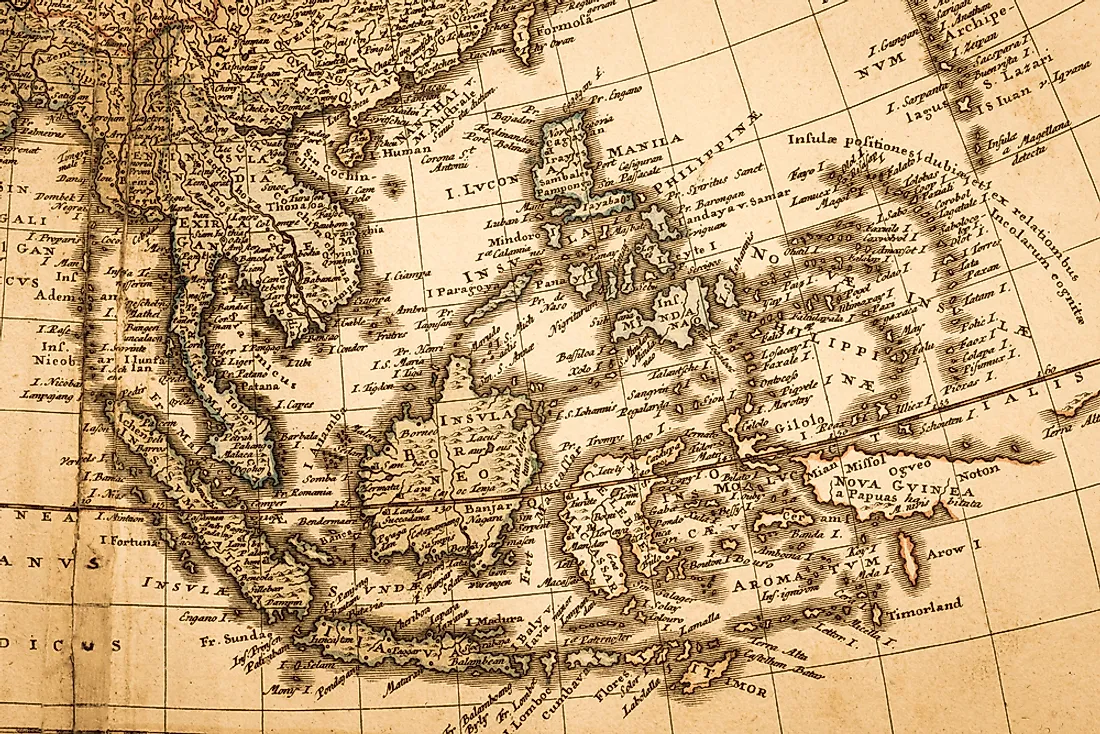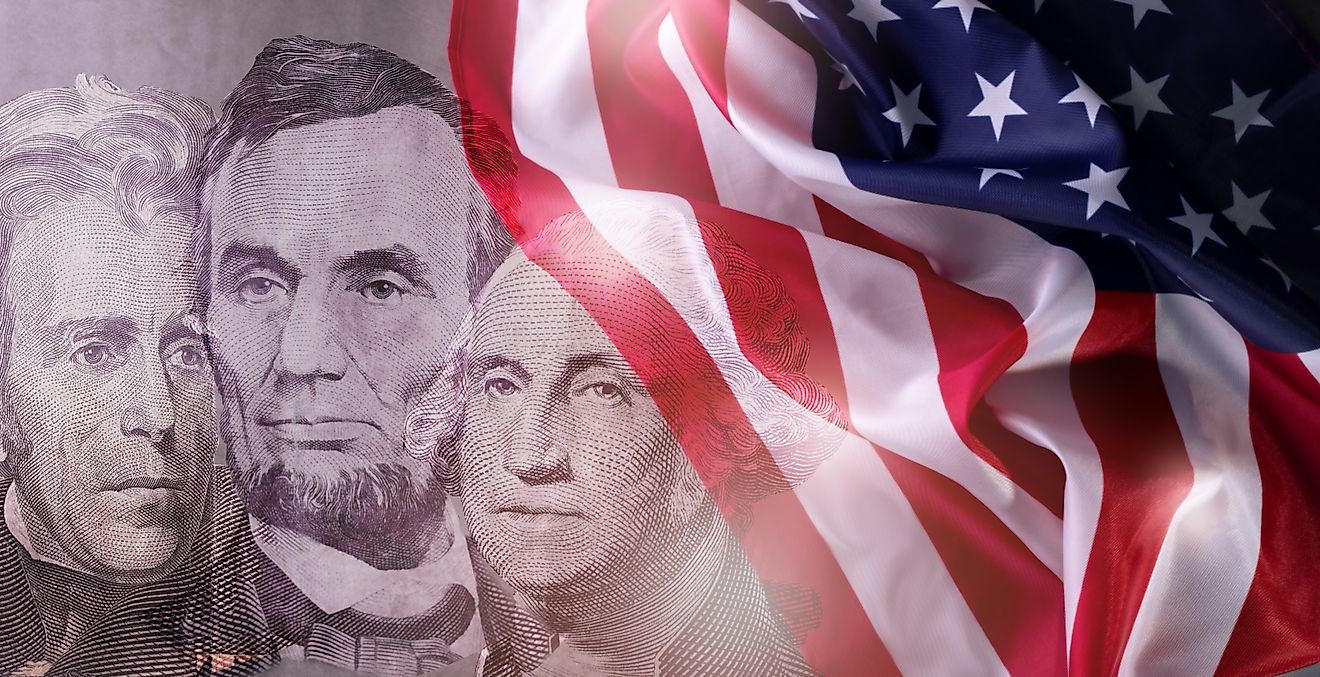The Oldest Map Projections in the World

Map projection is a systematic transformation of longitudes and latitudes of locations on the surface of an ellipsoid or a sphere into locations in a plane. Map projections are needed to create maps. Some of the oldest map projections date back to about 650 BCE. Maps have not only shaped the geographical interpretation of the world, but they have also facilitated the progress of humankind. Since ancient times, maps have been made for various uses ranging from trade, invasion, to exploration.
9. Theatrum Orbis Terrarum - 1570
The term "Theatrum Orbis Terrarum" is translated to mean "Theater of the World". It was authored by Abraham Ortelius, a Flemish and Netherlander geographer, and cartographer. The map is recognized as the first true modern atlas. The atlas compiled maps of the nations in the world by using contemporary information. It was uniformly sized, used both tests and maps, and included scholarly citations of the original mapmakers which were unusual features at the time. The Atlas benefited from great commercial success, and it is recognized as a cartography summary of the 16th century.
8. Cantino World Map - 1502
The Cantino World Map was drawn in Lisbon, Portugal, from where it was obtained and smuggled to Italy by Alberto Cantino, a formal delegate of the House of Este. The map illustrated Portugal’s geographical discoveries of the 15th century including those of the New World. The map clearly showed interesting details including the demarcation line dividing the Portuguese and Spanish territories in the New World as provided for in the Treaty of Torsedillas. It used standards to indicate control and conquests. The map is highly valuable as it represents a transition from medieval to modern mapmaking ideas.
7. Genoese Map - 1457
The Genoese Map was anonymously drawn, and it heavily relied on information given by the Italian explorer and merchant, Niccolò de' Conti. The map features legends in Latin, royalty on their thrones, and loxodromes and it depicts major populated areas as castellated towns. It was carefully drawn, and it stands out for various reasons. First, it places North at the top when most medieval maps put East or South. The map is also almond-shaped, a contrast to the oval and disc shapes preferred by most medieval mapmakers. The Map is preserved by the government of Italy in the Biblioteca Nazionale Centrale of Florence.
6. Catalan World Atlas - 1375
The Catalan World Atlas was drawn in 1375 and written in the Catalan language. Cresques Abraham, a Jewish book illuminator, is credited with the creation of the map which was produced by the Majorcan cartographic school. The map portrayed the complete geographical information available in the later middle Ages, including the latest knowledge on China and Asia. The map depicts the north at the bottom and the south at the top which sets it apart from other nautical charts. The Catalans were skilled cartographers as illustrated by the map and it remains the most significant medieval map written in the Catalan language.
5. Hereford Mappa Mundi - 1300
It is the largest known medieval map and for years it had remained secrete kept under the floor of Bishop Audley’s Chantry. The map is drawn on a large calfskin canvas, and in 1855 it was repaired and displayed at the British Museum. The map was intended for inspiration rather than navigation, and it features 420 towns, 15 biblical events, 33 exotic plants and animals, eight classical myths, and 32 people. The city of Jerusalem is recognizably located at the map’s center in addition to other important cities at that time such as Paris and Rome. The continents of Africa, Asia, Europe, and the Mediterranean region are well depicted. The Hereford Mappa Mundi is a striking work of art, and it is also known for its geophysical anomalies.
4. Anglo-Saxon Cotton world map - 1040
The Anglo-Saxon Cotton world map is the earliest known attempt of depicting the British Isles. The map was drawn in Canterbury and East is on top, West at the bottom and North is on the left. The British Isles, the Scillies, and the Orkneys are visibly shown. The map incorporates little drawings such as those showing mountains and cities, and in some parts, descriptions are added to the drawings. The then Saxon capital of Dublin and Winchester, London, is portrayed by use of Roman-style town symbols. Notably, two fighting men are depicted in the south of Britain; a drawing believed to reflect the conflict between the native Britons and the Saxons. The map is recognized for portraying highly developed scientific and geographical knowledge, unparalleled at the time.
3. Ptolemy - c. 150
The Ptolemy map was drawn in the 2nd century based on information published in the book “Geographia” by Claudius Ptolemy. Ptolemy was a Greek knowledgeable in the fields of geography, mathematics, and astronomy. His book gave mapmakers valuable information such as the size of the earth as well as the coordinates for the 8,000 locations indicated on the map. Before this, mapmakers had relied on the proportion and importance of countries instead of mathematical calculations. Ptolemy’s book challenged medieval mapmaking and triggered a sensation. The map’s locations stretch from the Canary Islands in the western part to Korea in the east. The importance of his work was reflected in errors perpetuated over time by the subsequent generations of mapmakers such as his under-exaggeration of the earth’s circumference.
2. Eratosthenes - c. 276-194 BCE
This map was named after its author who was a Greek astronomer credited with creating the geography discipline. Eratosthenes devised the system of longitude and latitude and also calculated the circumference of the world. Armed with these calculations, he drew a map of the world. Places named in the map include Hellas (Greece), Taprobance (Sri Lanka), Lerne (Ireland), Pontus Euxinux (Black Sea), and Cyrene (Libya). At the time of creating the map, Eratosthenes thought it depicted the whole world, but it only reflected regions around the Mediterranean and a few parts of Asia. Eratosthenes geographical estimates were the most accurate in his era, and his map paved the way for the advancement of geography.
1. Imago Mundi - 650 BCE
The Imago Mundi map was discovered at Sippar in the southern region of Iraq. It is in the form of a clay tablet which has been damaged over time. The map is from the Babylonian era, and it illustrates the Mesopotamian world as well as the mythical one from the Babylonian perspective. The map, which is mostly a diagram, portrays the city of Babylon in addition to seven cities and seven islands. There are cuneiform texts which translate to descriptions of the islands and the mythical beasts believed to live in them. The world is represented as a disc surrounded by water. The map is kept in the British Museum, and it remains the world’s oldest map.











